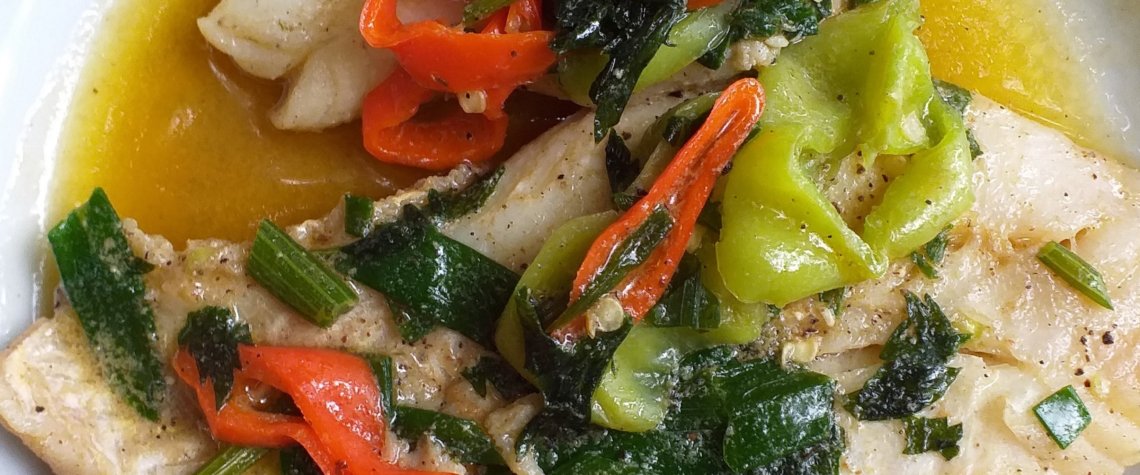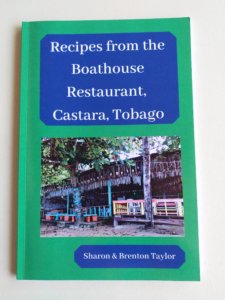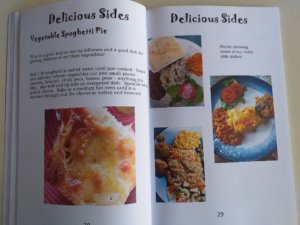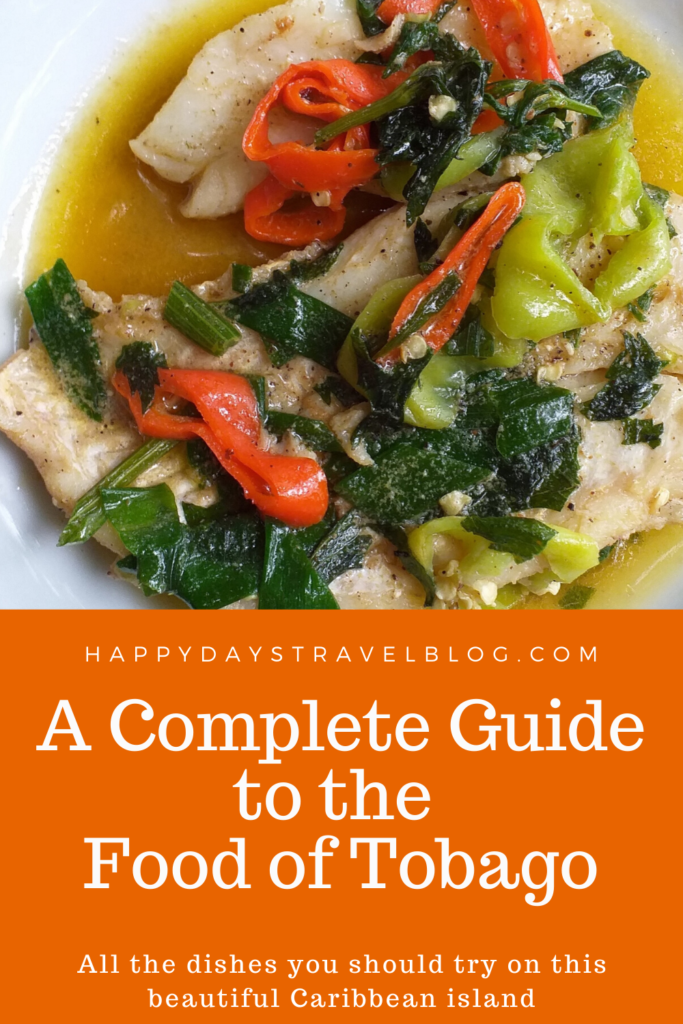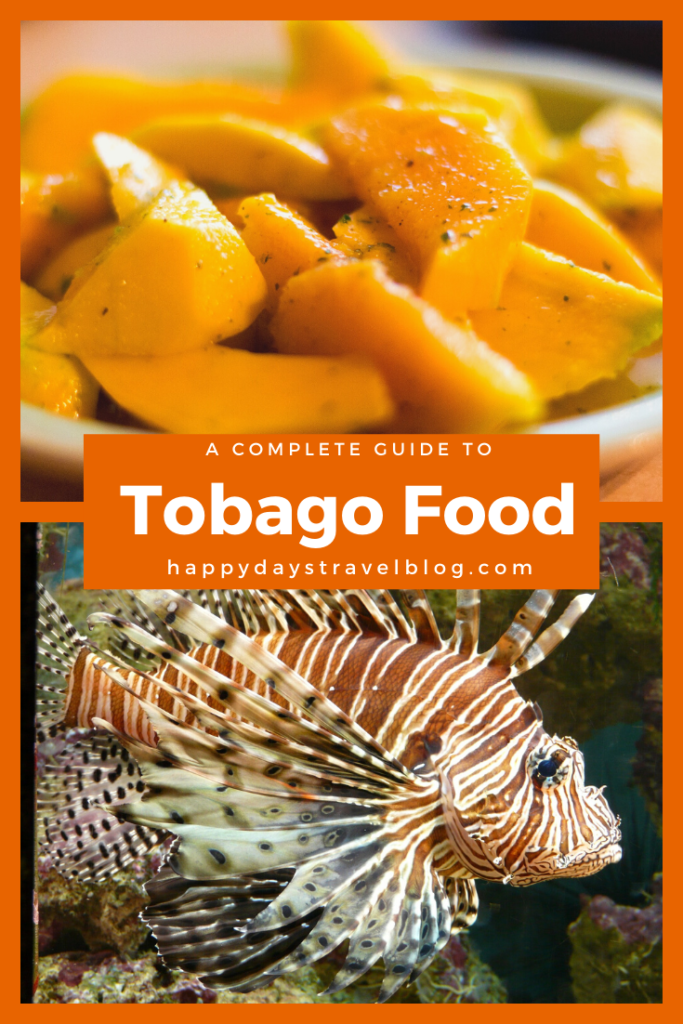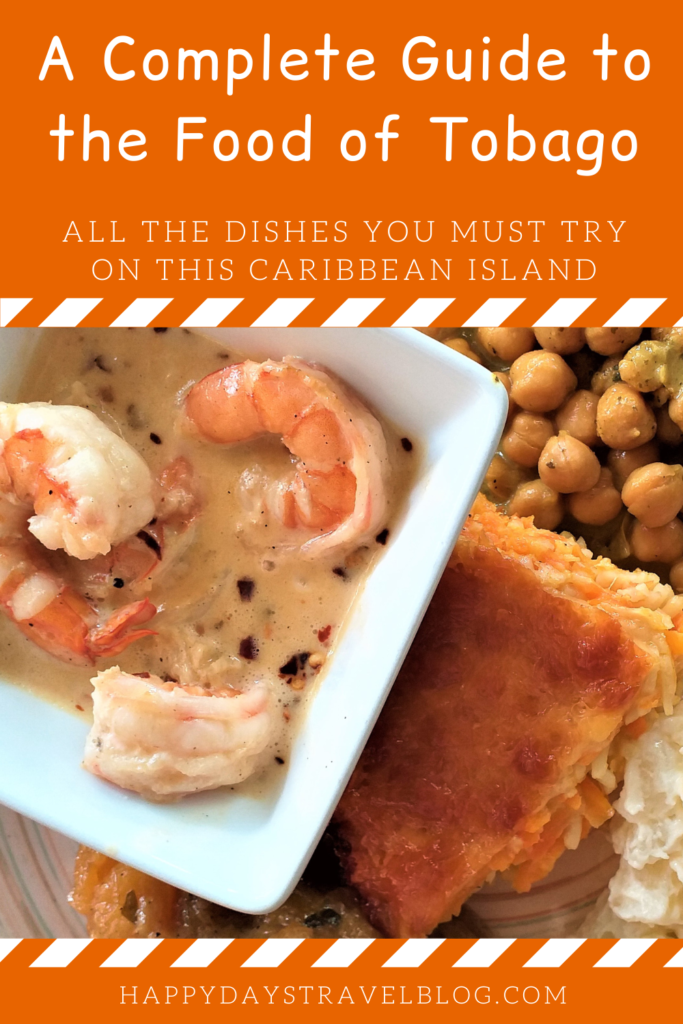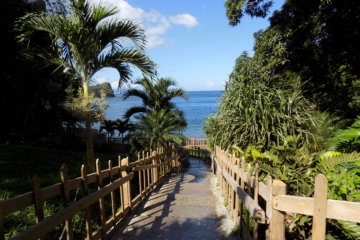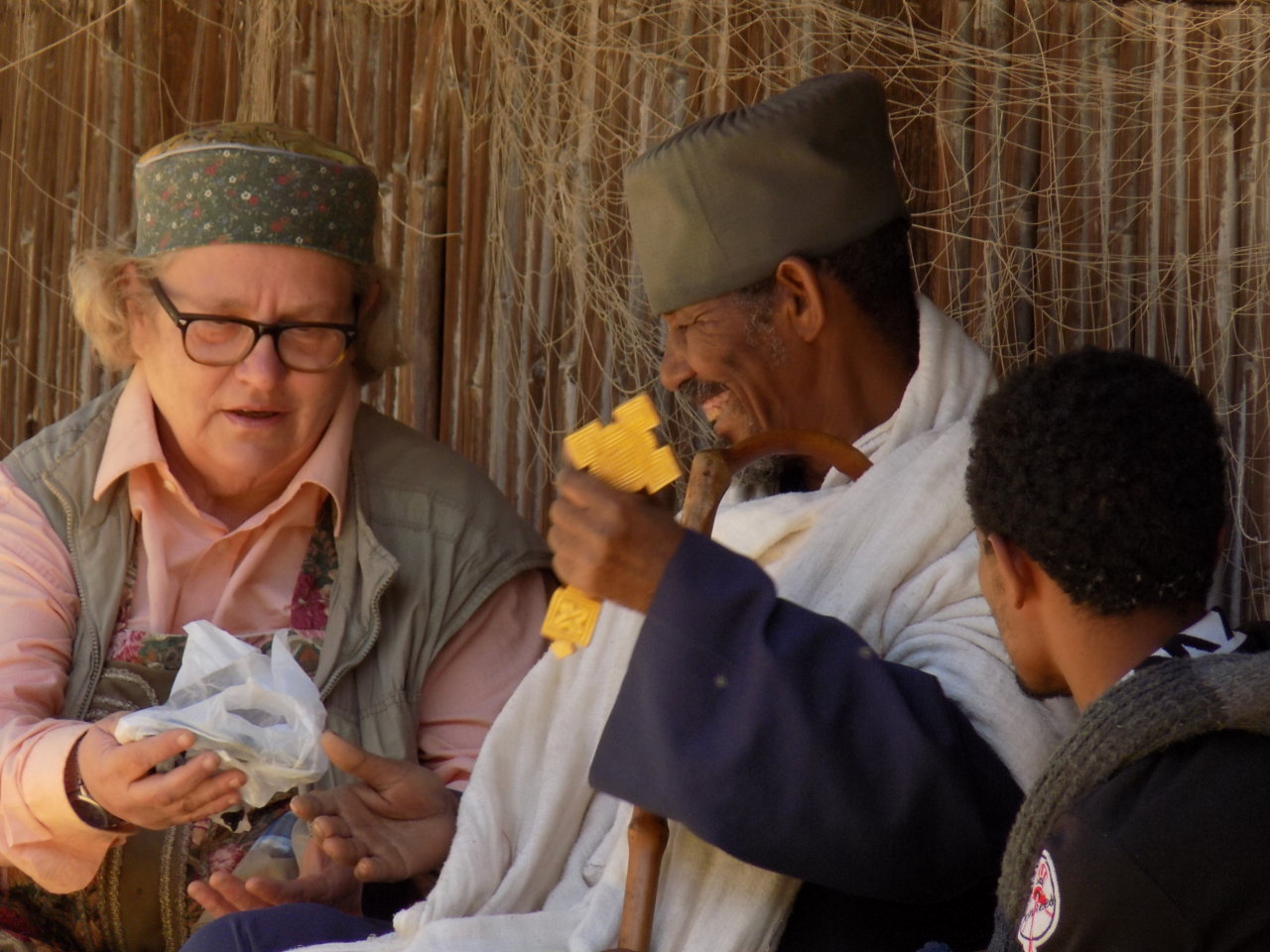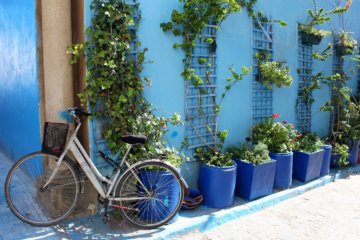Welcome to my guide to Tobago food! In this article, I will describe the foods you must try while you are on this beautiful Caribbean island.
As I explained in my Tobago Travel Guide, Tobago’s cuisine is a unique blend of African, Indian, Chinese, European, and Latin American influences, overlaid with tones of countries as diverse as Syria, Lebanon, and Italy. The result is food which is much tastier and far more varied than you find on other Caribbean islands.
Many Tobagonian restaurants offer similar menus. You will choose your protein (fish, seafood, chicken, goat, beef, pork, or lamb) and this will be served with a set vegetable plate made up of a selection of dishes. These might include callaloo, macaroni pie, curried channa, flavoured rice, sweet potato mash, breadfruit cheese, bodi (long green beans), battered aubergine, coleslaw, pumpkin curry, and many others. This is great for vegetarians – just order the sides!
READ MY GUIDE TO THE BEST RESTAURANTS IN TOBAGO
Read on for descriptions of not-to-be-missed Tobago foods!
In this article
Curried crab and dumplings
This is Tobago’s signature dish – when Trinidadians mention their sister isle, they’ll talk about the quiet life, the relaxed beaches, and argue about where to get the best crab ‘n’ dumplin’.
As popular as it is, I have to say curried crab and dumplings is not our favourite! I’m allergic to shellfish, so can’t eat it anyway, but Mark, who is the biggest fish and seafood fan ever, just can’t get on with it! Tobagonian crabs are very small and have very little meat. The dumplings are usually really stodgy and cloying. It all seems like a lot of effort for very little reward!
Having said this, it’s still something you should try for yourself! The best place to go is Store Bay. You’ll find a number of kiosks with names such as Miss Trim’s, Miss Jean’s, Sylvia’s, and Miss Joycie’s. Take your pick and have a go!
Watch this video if you want to try cooking curry crab and dumplings at home:
Read a recipe for the national dish here.
Roti
Curry and roti are national favourites. Roti originated in East India, but, like all West Indian curry dishes, has now been thoroughly localised and is quite different to the East Indian variants. It is basically a thin flat unleavened bread (flour pancake), not dissimilar to a tortilla. Generally known as a roti skin, it is traditionally wrapped around a meat and potato curry. Other popular fillings are curried chicken, goat, or shrimp with potato chunks and channa (chickpeas). Vegetable roti is also popular. There are several variations of roti skin including the strange-sounding buss-up-shut. Here, a thin roti skin is shredded and used to scoop up mouthfuls of the curry. They’re all rather messy to eat, but don’t be afraid to use a knife and fork. Totally delicious. Must be tried!
If you fancy making buss-up-shut roti at home, watch this video:
You will find recipes for several roti fillings (pumpkin, goat, beef, and chicken) in my Tobago cookbook.
Head to the fishing village of Charlotteville in northern Tobago, where Jabba’s bar on the waterfront serves the best roti with curried pumpkin.
Shark ‘n’ bake
As in Trinidad, shark ‘n’ bake is one of Tobago’s most popular street foods. Slices of seasoned shark meat, accompanied by chadon beni (local coriander), tamarind, and garlic sauces, and topped with fresh salad and pineapple, are served hot in a light fried bread roll (it’s not a ‘bake’ at all!).
To make bakes:
To prepare the shark:
Delicious as it is, be aware that sharks are disappearing from Caribbean waters to the detriment of the region’s reefs and fish populations. For this reason, you’d be better to ask for more sustainable fish with your bake. Mahi-mahi, tilapia, and flying fish are all good choices.
Lobster and Seafood
Don’t miss the opportunity to taste some freshly caught and reasonably priced shellfish while you are in Tobago. Lobster, langoustines, and shrimp (prawns) are in plentiful supply. They will be served grilled or barbecued and smothered in garlic butter, either with a vegetable plate, or in a ‘bake’ as the best prawn sandwich you will ever have tasted (see above)!
Check out the langoustine bakes at the Juice Bar at the Boathouse in Castara.
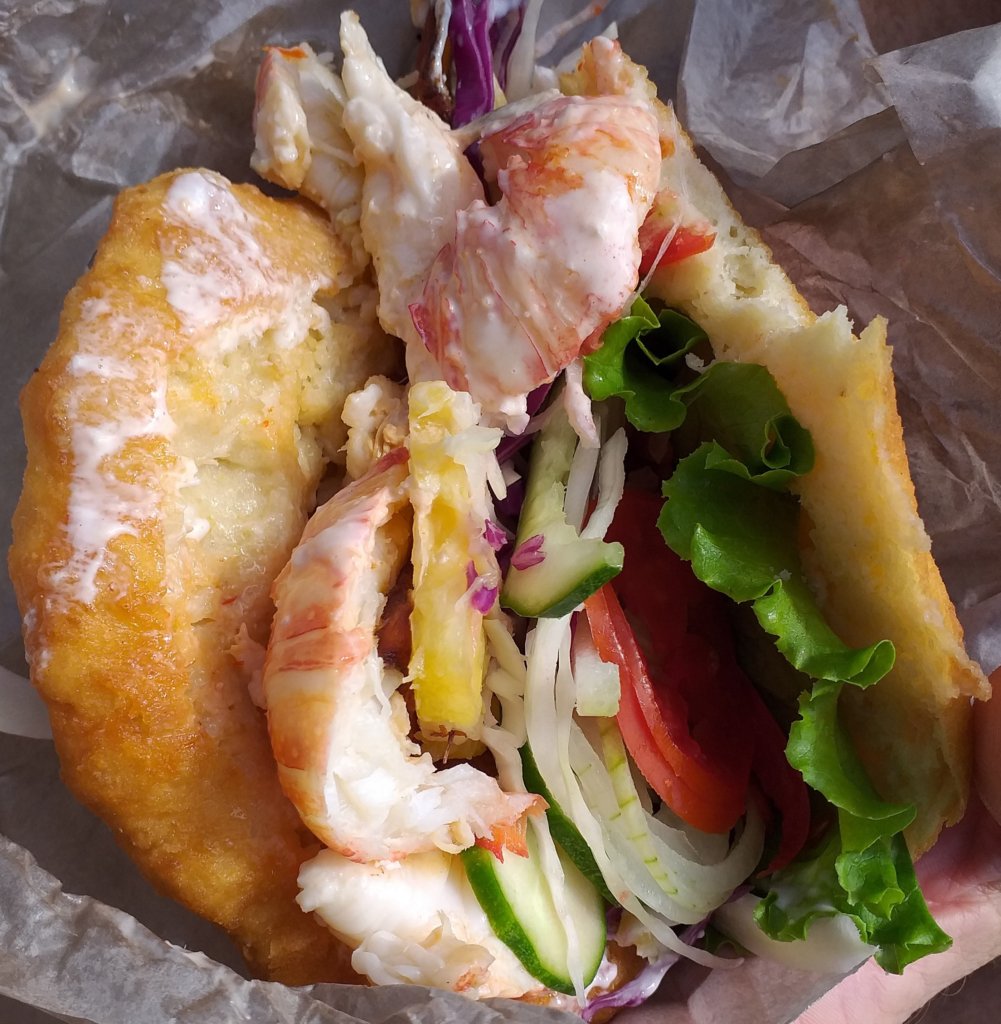
Fish
Being an island, fish is obviously a huge part of the Tobagonian diet. As well as shark (see above), countless other varieties are caught in the traditional nets used by local fishermen. There’s nothing better than being there when the nets are hauled on to the beach and getting your pick of the day’s catch. This is likely to include mahi-mahi, snapper, and tuna. Local restaurants tend to cook these simply, steaming the fillets in herbs and chillies.
Local people cook and eat the small fish varieties whole, as we would whitebait.
Watch this video of the nets being hauled onshore in Bloody Bay, Tobago.
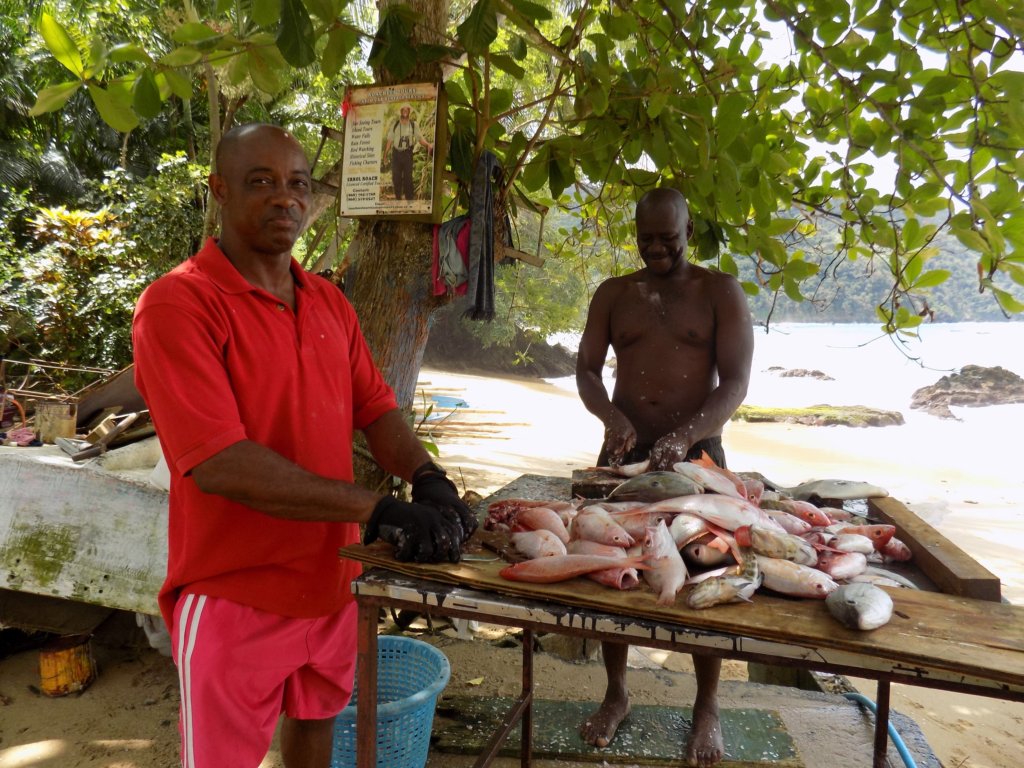
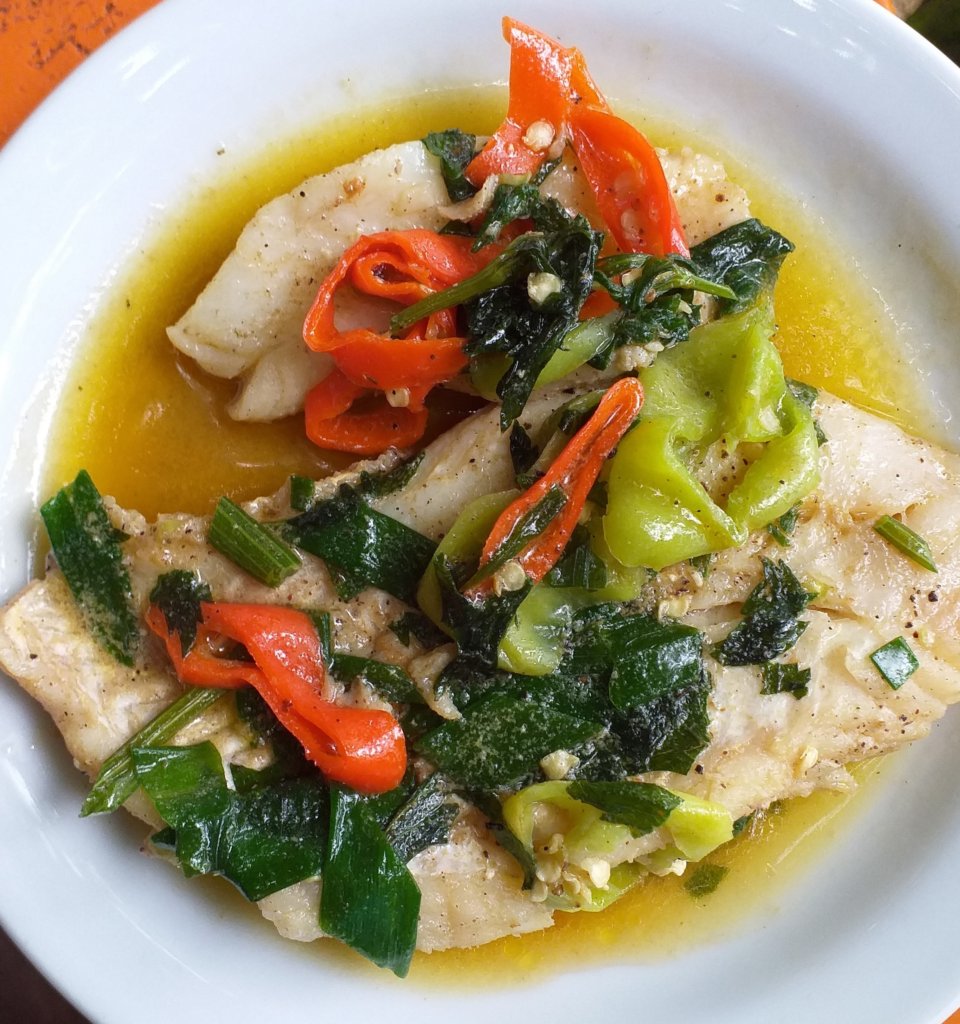
Lionfish
Lionfish are not native to Caribbean waters. Rumour has it that some escaped from a Florida aquarium a few years ago and made their way south. Unfortunately, they have no natural predators there and are responsible for depleting fish stocks and destroying the coral reefs around Tobago. The only way to catch them is by spear-fishing. They are, however, delicious to eat, so, if you see lionfish on a menu, please order it. You’ll be doing your bit to protect Tobago’s fragile eco-system.
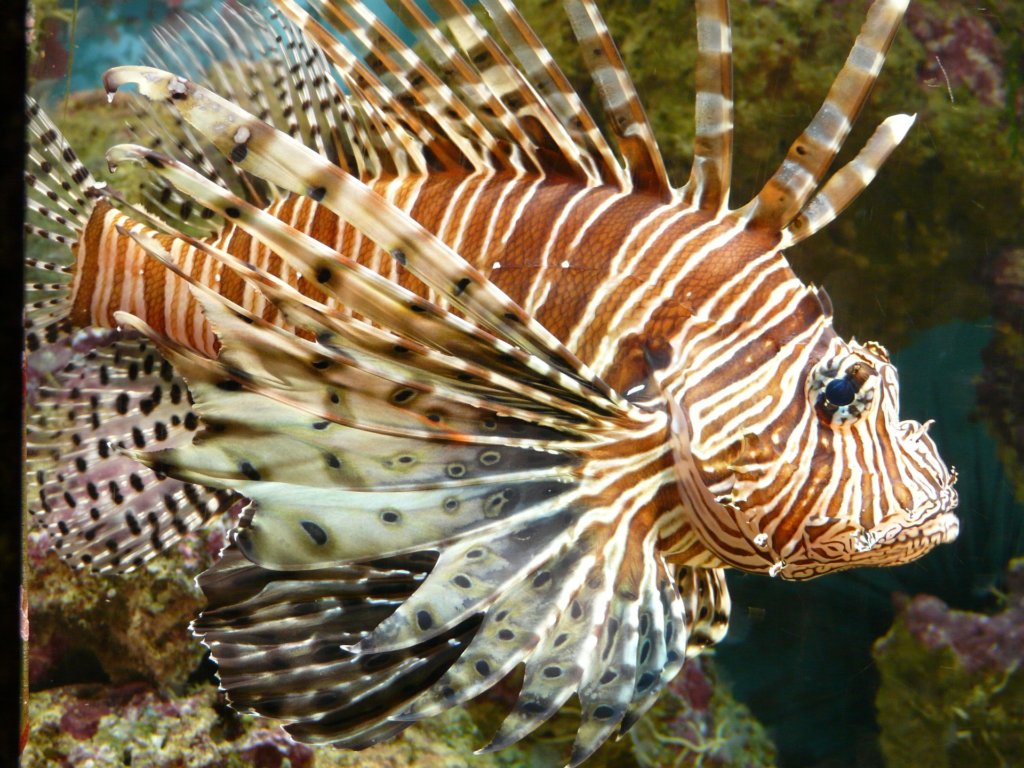
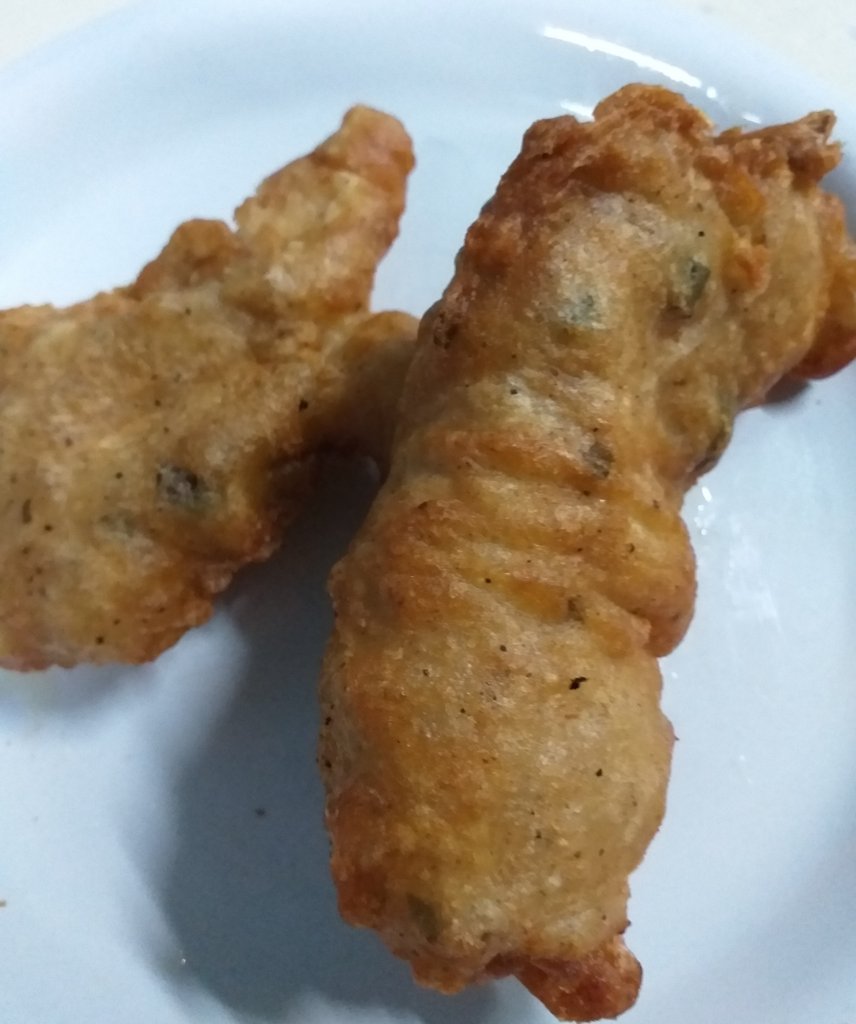
Doubles
Doubles are the most popular Indian snack and are served all day every day from roadside stalls. Vendors set up as early as 5am and locals eat them for breakfast on the way to work. Look out for them outside Penny Savers supermarket in Carnbee, around the airport, and near the port in Scarborough.
If you order doubles, what you get is two pieces of soft, fried bara bread sandwiching a runny channa (chickpea) curry that’s dressed with cucumber, pepper sauce and mango chutney. They are delicious but incredibly messy to eat! If you prefer to have less pepper sauce, ask for your doubles to be ‘slight pepper’.
Watch this video for some more information about doubles and instructions on how to make them home.
Gyros
Tobago food is not all about fish and curry! Spit-roasted meat served in a wrap with salad is a recent addition to the Tobagonian diet, having been introduced to the island by Syrian-Lebanese immigrants only about 15 years ago. Gyros have quickly become a staple, though. Several Middle Eastern restaurants and takeaways have opened up around Tobago. The best of these is probably Andre’s Gyros in Pigeon Point.
Chow
This is fresh fruit with a twist: chopped pineapple, mango or pommecythere (aka ambarella) is marinated in lime juice, pepper, garlic and chadon beni (coriander). Buy and eat it on the beach. Chow can be addictive and it may be hard to resist the temptation to spice up seemingly boring fruit when you return home.
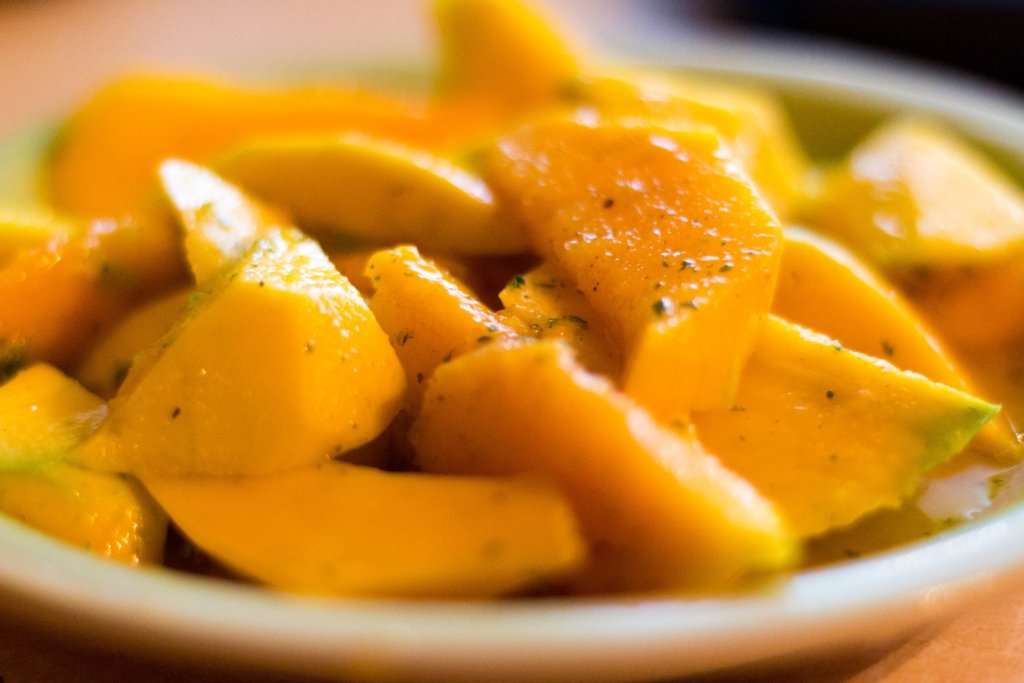
Barbecued pigtail
Like chicken-foot curry and souse (marinated trotters), pigtail is part of the tradition of not wasting any part of the animal and turning cheap cuts into delicious meals. Put the image of a curly tail out of your mind and enjoy it grilled, served with barbecue sauce and rice.
Buljol
Traditionally served for breakfast, buljol is a blend of flaked saltfish, onions, tomatoes, lime juice and sweet peppers, usually eaten with avocado and light airy bread rolls called hops. Sometimes, the hops are substituted with coconut bake, a flat round bread made with grated coconut.
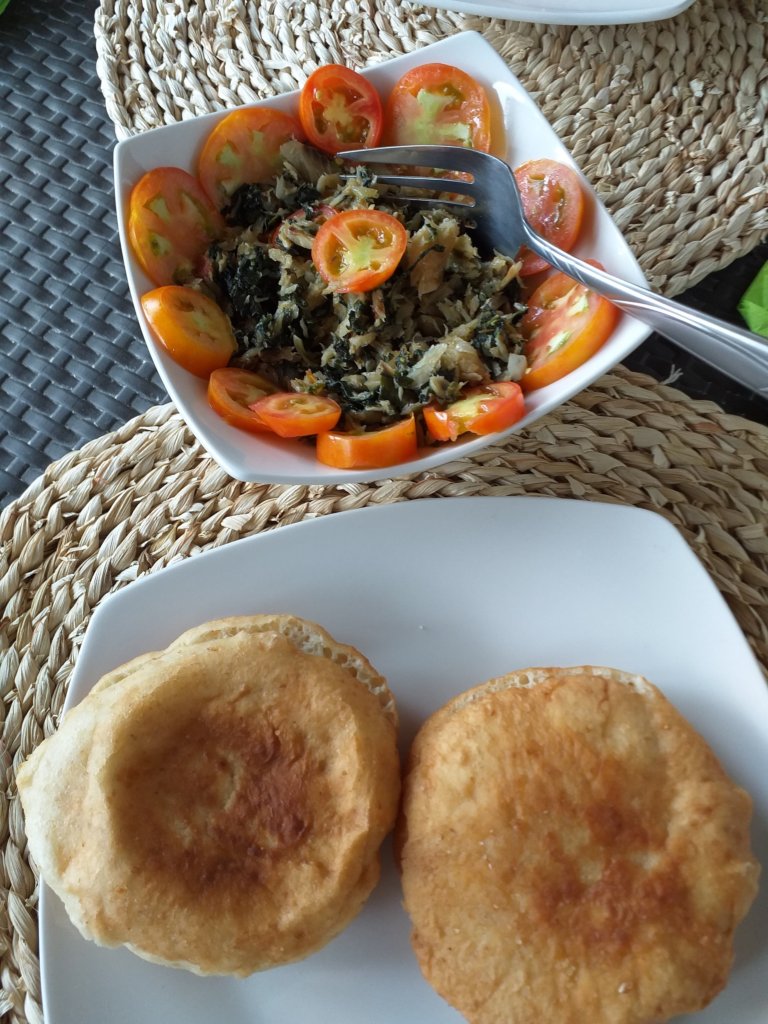
Creole Cuisine
A lot of Tobago food is influenced by Creole cooking. You will find these dishes on menus all over the island.
- Pelau – a classic Creole chicken dish. The chicken is caramelised in burnt brown sugar. Rice, pigeon peas, garlic, onions and pumpkin are then added and the whole thing is cooked slowly in coconut milk. The dish is traditionally served with coleslaw and a slice of avocado.
- Callaloo – a dish of chopped dasheen leaves cooked with okra, pumpkin, coconut milk and, sometimes, crab meat. It tastes good, although the slimy texture might be offputting for some (like me!!).
- Sunday lunch – baked chicken served with rice, stewed peas, macaroni or potato pie, and pasta, potato or green fig salad.
- Souse – pigs’ or chickens’ feet marinated in lime juice and peppers.
- Oil down – vegetables (especially breadfruit and cassava) stewed in coconut milk and flavoured with pigtail. These are served as the classic accompaniment to all main meals.
Heritage Bread
No article about Tobago food would be complete without a mention of fresh bread cooked in dirt ovens.
These traditional African mud ovens used to be found all over Tobago. Now, very few remain, but there are two in Castara. Castara Heritage Bakers’ Oven, run by a group of local ladies, is located near the village school. They bake on Wednesdays and Saturdays each week. The other one is on the beach in Big Bay, just past CasCreole Restaurant. It is run by Mr Alston Taylor (aka Daddy Ben) and his wife, Maudlyn. Every Thursday and Saturday, they produce delicious pumpkin and wholemeal loaves as well as currant buns (they taste amazing when toasted and buttered – very reminiscent of the toasted teacakes of my childhood!) and traditional Tobagonian coconut tarts.
Bamboo is burnt inside the mud oven and then the cinders are pushed out of the back door. The loaves and tarts are then placed on banana leaves and put in the oven through the front door. The residual heat cooks them. Once baked, they are removed and sold. This is called a ‘firing’. To bake another batch, you must first burn some more bamboo.
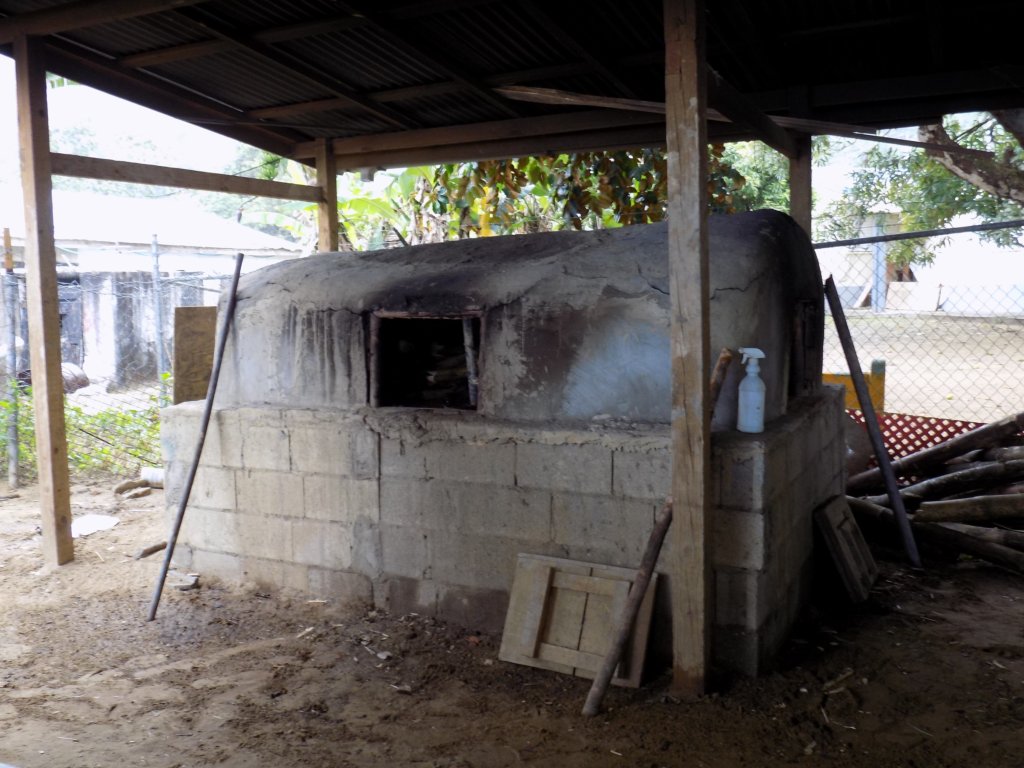
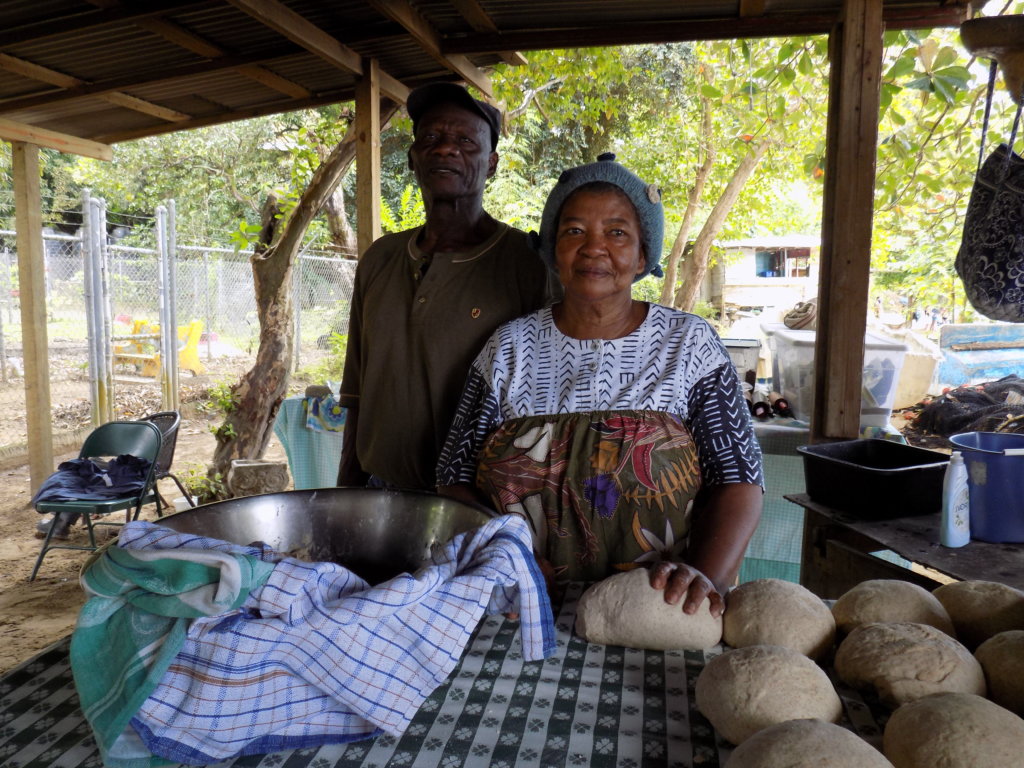
Tobago Black Cake
This is a rich cake flavoured with burnt sugar and packed with dried fruit, traditionally served at weddings and other celebrations. At Christmas, it is brought to the table flaming with rum just like a Christmas pudding.
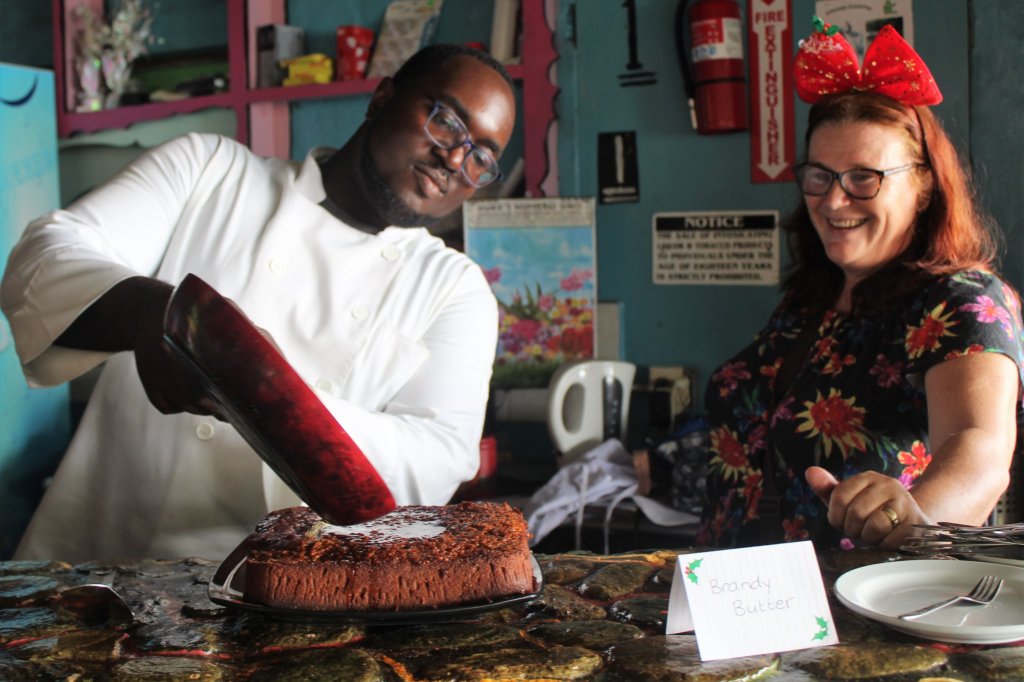
READ MY COMPLETE TOBAGO TRAVEL GUIDE
Check out Ainsley Hariott’s Caribbean Kitchen
Episode 4 is all about Tobago! Read the book or buy the DVD.
Get a Copy of My Tobago Cookbook
I’m very proud to have edited this cookbook of recipes from the Boathouse Restaurant in Tobago created by owner Sharon Taylor and her team. Within these pages, you will find many recipes for dishes found in this article including onion bakes, pumpkin curry, lionfish in Carib beer batter, curry goat, Tobago black cake, and so much more!
If you like what you’ve read, PIN IT!!
If you’re travelling soon, please use these links!
Are you travelling soon? Use these links when making your bookings. These are the companies we use. It won’t cost you any extra, but we will earn a few pennies to help keep Happy Days Travel Blog going. Thank you!!
- Book your travel insurance with World Nomads (Never leave home without protecting yourself, your trip and your belongings!)
- Book your flight with Skyscanner
- Book your accommodation with Booking.com
- Book a tour with Tour Radar or Intrepid Travel
- Book city tours and activities with Get Your Guide
Disclosure: This post contains affiliate links. If you click through for more information, or to make a purchase, it may result in a small commission coming my way. Please note that there is no extra cost to you associated with this. Thank you so much for supporting my site.
Join our mailing list

Sign up to receive our monthly newsletter. Keep up with what we're doing and be the first to receive special offers and insider tips.

